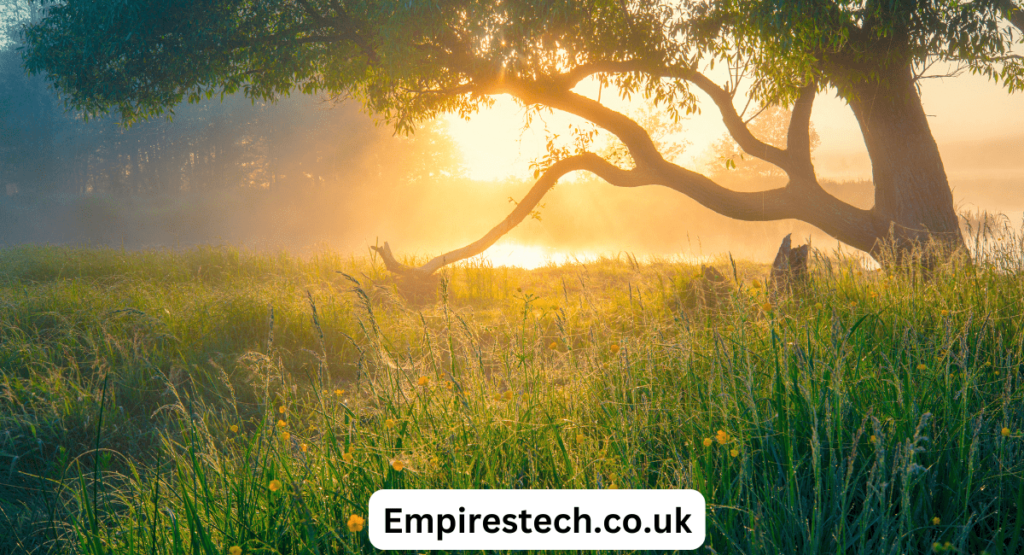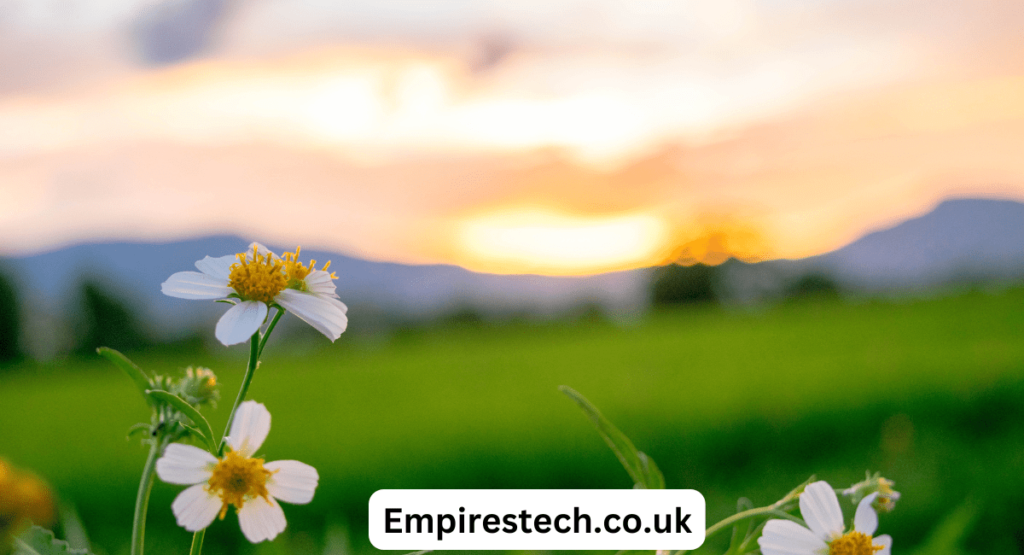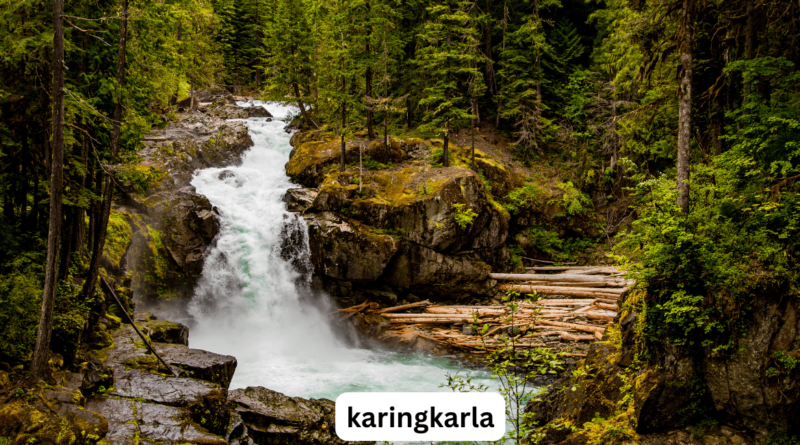Karingkarla: A Hidden Gem of Nature’s Beauty
Introduction
In the heart of India, nestled away from the bustling city life and the chaotic urban environments, lies a hidden gem that beckons nature lovers, adventure enthusiasts, and those seeking tranquility alike. This gem is Karingkarla, a pristine location that has remained largely untouched by commercial tourism, offering a rare and authentic experience of India’s natural beauty. Whether you are an avid trekker, a bird-watching enthusiast, or simply someone looking to escape the monotony of everyday life, Karingkarla promises a retreat like no other.
The Mystique of Karingkarla
Karingkarla is more than just a destination; it is an experience. The name “Karingkarla” might not be widely recognized, but this only adds to its charm. Hidden in the rich cultural and geographical tapestry of India, Karingkarla is a place where time seems to slow down, allowing visitors to immerse themselves in the serenity of the surroundings. The area is characterized by lush green forests, clear streams, and a wide variety of flora and fauna, making it a haven for nature lovers.
The Natural Beauty of Karingkarla
The Flora and Fauna
Karingkarla is a biodiversity hotspot, boasting a wide variety of plant and animal species. The area is home to several endemic species of plants, some of which are not found anywhere else in the world. The forests of Karingkarla are dense and rich, providing a perfect habitat for various species of birds, insects, and mammals. Birdwatchers can delight in spotting a range of birds, from common species to rare and endangered ones.
The region’s flora is equally impressive, with a plethora of medicinal plants, wildflowers, and towering trees that create a lush canopy overhead. The forest floor is often carpeted with colorful blooms, especially during the monsoon season, when the entire area comes alive with vibrant hues and the fresh scent of earth and flowers.
The Majestic Landscapes

Karingkarla is blessed with diverse landscapes that range from rolling hills to serene water bodies. The region is dotted with small lakes, rivers, and streams, which add to the scenic beauty of the place. These water bodies are not only picturesque but also serve as important ecosystems for the local wildlife. Trekking through the hills of Karingkarla offers breathtaking views of the surrounding landscapes, with the mist-covered mountains in the distance and the lush greenery stretching as far as the eye can see.
One of the most striking features of Karingkarla is its waterfalls. These natural cascades are a sight to behold, especially during the monsoon season when they are in full flow. The sound of the water crashing against the rocks, combined with the cool mist that rises from the falls, creates a refreshing and rejuvenating experience for visitors.
Adventure and Activities in Karingkarla
Trekking and Hiking
For adventure enthusiasts, Karingkarla offers a variety of trekking and hiking trails that cater to all levels of experience. Whether you are a seasoned trekker or a beginner, you will find a trail that suits your abilities. The trails take you through dense forests, across rivers, and up hills, providing a close encounter with the natural beauty of the area. Along the way, trekkers can enjoy stunning views, spot wildlife, and experience the peace and solitude that Karingkarla offers.
One of the most popular trekking routes in Karingkarla is the trail that leads to the top of Karingkarla Hill. This trek is moderately challenging and takes you through a diverse range of landscapes, including forests, grasslands, and rocky terrain. The view from the top of the hill is truly spectacular, offering panoramic vistas of the surrounding region.
Bird Watching
Karingkarla is a paradise for bird watchers. The region’s rich biodiversity includes a wide variety of bird species, making it an ideal location for bird watching. Early morning and late afternoon are the best times to spot these feathered creatures as they are most active during these hours. With a bit of patience and a keen eye, you can spot rare and endemic species that are not commonly found elsewhere.
The forested areas and water bodies in Karingkarla attract a multitude of birds, including kingfishers, eagles, owls, and many species of songbirds. Bird watchers often come across migratory species that visit the region during certain times of the year, adding to the excitement and variety of bird watching in Karingkarla.
Camping
Camping is another popular activity in Karingkarla, allowing visitors to fully immerse themselves in the natural surroundings. There are several designated camping sites in the area, each offering a unique experience. Whether you prefer camping by a serene lake, in the middle of a dense forest, or on a hilltop with breathtaking views, Karingkarla has it all.
Camping in Karingkarla is a chance to disconnect from the modern world and reconnect with nature. The clear night skies, free from light pollution, offer a stunning display of stars, making stargazing a memorable part of the camping experience. The sound of the forest at night, combined with the fresh air and the warmth of a campfire, creates a perfect setting for relaxation and reflection.
Cultural and Historical Significance of Karingkarla
Local Tribes and Traditions
Karingkarla is not just about natural beauty; it is also rich in cultural heritage. The region is home to several indigenous tribes who have lived in harmony with nature for centuries. These tribes have their own unique customs, traditions, and way of life, which are deeply intertwined with the natural environment.
Visitors to Karingkarla have the opportunity to learn about the traditional practices of these tribes, including their farming methods, handicrafts, and rituals. The tribes of Karingkarla are known for their hospitality, and many visitors leave with a deep appreciation for the simplicity and wisdom of their way of life.
Historical Landmarks

In addition to its natural and cultural attractions, Karingkarla also has a number of historical landmarks that are worth exploring. These include ancient temples, forts, and other structures that date back to various periods in history. These landmarks provide a glimpse into the region’s rich past and the various civilizations that have left their mark on Karingkarla.
One of the most notable historical sites in Karingkarla is the ancient temple dedicated to a local deity. This temple, built in the traditional architectural style, is a place of worship for the local tribes and also attracts visitors who are interested in history and culture. The temple is surrounded by beautiful natural scenery, making it a peaceful and serene place to visit.
Sustainable Tourism in Karingkarla
Responsible Travel
Karingkarla is a fragile ecosystem, and it is important that tourism in the area is conducted in a sustainable and responsible manner. Visitors are encouraged to minimize their impact on the environment by following certain guidelines, such as sticking to designated trails, not littering, and respecting the local wildlife and vegetation.
Sustainable tourism practices in Karingkarla also include supporting the local communities by purchasing handmade crafts, participating in guided tours led by local guides, and staying in eco-friendly accommodations. By doing so, visitors can contribute to the preservation of Karingkarla’s natural and cultural heritage.
Eco-Friendly Accommodations
There are several eco-friendly accommodations in Karingkarla that offer a comfortable stay while minimizing the environmental impact. These accommodations are designed to blend in with the natural surroundings and are often built using locally sourced materials. They also employ sustainable practices such as rainwater harvesting, solar energy, and waste recycling.
Staying in an eco-friendly accommodation allows visitors to enjoy the beauty of Karingkarla without compromising the environment. These accommodations also provide an opportunity to learn more about sustainable living practices, which can be applied in everyday life.
Planning Your Visit to Karingkarla
Best Time to Visit
The best time to visit Karingkarla depends on the type of experience you are looking for. The region has a tropical climate, with hot summers, a monsoon season, and mild winters. Each season offers a different experience, and visitors can choose the time that best suits their preferences.
- Summer (March to June): The summer months are warm, but not overly hot, making it a good time for trekking and other outdoor activities. The forests are lush and green, and the rivers and lakes are full, providing a refreshing experience.
- Monsoon (July to September): The monsoon season brings heavy rainfall, which revitalizes the forests and waterfalls. This is the best time to see Karingkarla in its full natural glory, but be prepared for wet and slippery conditions on the trails.
- Winter (October to February): The winter months are the most popular time to visit Karingkarla, as the weather is cool and pleasant. This is an ideal time for all types of activities, including trekking, bird watching, and camping.
How to Get There
Karingkarla is located in a relatively remote area, but it is accessible by various modes of transportation.
- By Air: The nearest airport to Karingkarla is located in [Nearest City], which is about [X] kilometers away. From the airport, visitors can hire a taxi or take a bus to reach Karingkarla.
- By Train: The nearest railway station is in [Nearest City], which is well-connected to major cities in India. From the railway station, visitors can take a taxi or a bus to Karingkarla.
- By Road: Karingkarla is connected by road to major cities and towns in the region. Visitors can drive to Karingkarla or take a bus from nearby cities.
Accommodation Options
Karingkarla offers a range of accommodation options, from budget guesthouses to luxury eco-resorts. Most accommodations are designed to blend with the natural surroundings and provide a comfortable stay while allowing guests to enjoy the beauty of the area.
Things to Keep in Mind
- Respect the Environment: Karingkarla is a fragile ecosystem, and it is important to minimize your impact on the environment.
Pack Accordingly: Depending on the time of year you visit, pack appropriate clothing and gear. If you plan to trek, ensure you have sturdy footwear and a raincoat if visiting during the monsoon season. - Stay Safe: While Karingkarla is a peaceful and safe destination, it is always advisable to take basic precautions, such as staying with your group, following the advice of local guides, and being aware of your surroundings.
Unique FAQs About Karingkarla
1. What makes Karingkarla different from other tourist destinations in India?
Karingkarla is unique because it is still relatively undiscovered by mainstream tourism, offering a more authentic and untouched experience of India’s natural beauty. The region’s biodiversity, serene landscapes, and cultural heritage make it a one-of-a-kind destination for those looking to explore something off the beaten path.
2. Is Karingkarla suitable for family trips?
Yes, Karingkarla is suitable for family trips. The area offers a range of activities that can be enjoyed by visitors of all ages, including trekking, bird watching, and camping. The peaceful and safe environment also makes it an ideal destination for families looking to spend quality time in nature.
3. What should I pack for a trip to Karingkarla?
When visiting Karingkarla, it is important to pack according to the season. Comfortable clothing, sturdy trekking shoes, a hat, sunscreen, and insect repellent are recommended. If you are visiting during the monsoon season, be sure to bring waterproof clothing and gear. A good camera and binoculars are also useful for capturing the natural beauty and wildlife of the area.
4. Can I visit Karingkarla as a solo traveler?
Yes, Karingkarla is a great destination for solo travelers. The area is safe, and the locals are friendly and welcoming. Solo travelers can enjoy the peace and solitude that Karingkarla offers, making it a perfect place for reflection and relaxation.
5. How can I support sustainable tourism in Karingkarla?
To support sustainable tourism in Karingkarla, consider staying in eco-friendly accommodations, purchasing local handicrafts, and participating in guided tours led by local guides. It is also important to follow responsible travel practices, such as minimizing waste, respecting the local culture, and protecting the natural environment.
Conclusion
Karingkarla is more than just a destination; it is a journey into the heart of nature, culture, and history. This hidden gem offers an escape from the ordinary, inviting visitors to explore its untouched landscapes, rich biodiversity, and vibrant cultural heritage. Whether you are seeking adventure, tranquility, or a deeper connection with nature, Karingkarla promises an unforgettable experience. As you plan your visit, remember to respect the environment and the local communities, ensuring that this beautiful region remains preserved for future generations to enjoy.

